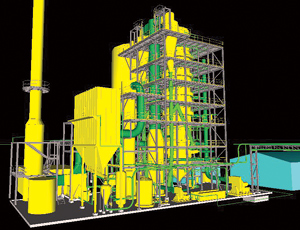Plans to build a new, $50-million facility to recycle fly ash in southern Maryland for Atlanta-based Mirant could fall through if the Environmental Protection Agency designates the coal combustion by-product as a hazardous waste, says Mirant’s Misty Allen , the utility’s director of external affairs.

Allen says Mirant filed an application on March 26 with the Maryland Public Service Commission to build a facility in Morgantown, Md., that would recycle up to 400,000 tons of coal ash per year. The recycled material could be used subsequently in the production of concrete.
Mirant currently dumps waste—a controversial practice that activists have challenged—into two Prince George’s County landfills: the 300-acre Brandywine and Morgantown’s Faulkner. Mirant announced on March 12 it is working with the state to develop a closure plan for the Faulkner landfill, which the company says has reached capacity.
The company says building the facility would enable the firm to eventually stop dumping coal ash into landfills and use material recycled from its Morgantown and Chalk Point coal-fired powerplants for concrete production. Allen says if the EPA issues, as expected, a proposal classifying fly ash as a hazardous waste, the material would go into hazardous-waste landfills. “That would be our only option because we’re afraid that the beneficial-use market would freeze up.”
Environmental groups counter that the designation of fly ash as a hazardous waste would encourage recycling. “The two are not mutually exclusive,” says Jennifer Peterson, an Environmental Integrity Project (EIP), attorney. EIP intervened in a 2008 Maryland Dept. of Environmental Protection (MDEP) lawsuit against Mirant and called for the cleanup of the Faulkner landfill. “EPA easily could do a rule that would designate waste dumped into landfills as hazardous and yet provide a different set of rules and regulations for ash that is recycled,” she says.
Peterson says millions of tons of coal ash have been dumped into the Brandywine and Faulkner landfills, which have leached selenium, cadmium and other toxic pollutants into groundwater and streams that flow into the Chesapeake Bay. On April 3, MDEP sued Mirant for violating the Clean Water Act by not developing a cleanup timetable for the groundwater of the Brandywine landfill.
Allen says the recycling facility would employ hundreds of construction workers and take 10 to 12 months to build, with a 2012 target completion. The proposed technology is relatively new and has been used only commercially at one other facility, says Jimmy Knowles, a vice president for Lexington, S.C.-based Sefa Group, the technology’s developer. Sefa’s technology burns away 100% of the organic carbon from the ash, creating a material that requires less cement when producing concrete, he says.




Post a comment to this article
Report Abusive Comment